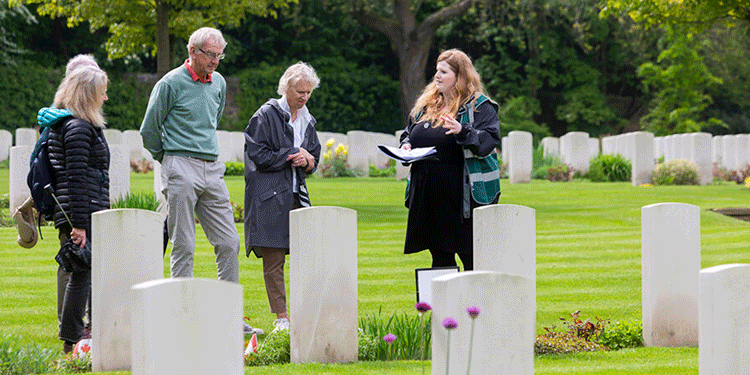
James Albert Tucker's full genealogical history has not been determined, although he was listed as 22 years of age in 1911, making his birth around 1889, and he had been born at Acton, in Middlesex.
His entry in the Soldiers' Effects List names his father as James Martin Tucker. However, even with these details James Albert Tucker has not been located further prior to World War One.

James Albert Tucker's service papers have not survived, and what is known has been extrapolated from other sources.
From his service number it is possible to determine that he enlisted in 1908, and 'Soldiers Died in the Great War' lists his place of enlistment as Kingston, in Surrey.
He enlisted in the East Surrey Regiment as a Private, no. L/9643. By 1911 he was serving with a detachment of the 2nd Battalion at Meiktila, in Burma.

The 2nd Battalion, the East Surrey Regiment, in August, 1914, was serving at Chaulbattia, in India. It returned to England in November, 1914, landing at Devonport on 23 December, and then went to Winchester, where it joined the 85th Brigade in the 28th Division.
It landed at Le Havre, in France, on 19 January, 1915, with a strength of 25 officers and 966 other ranks, but did not include James Albert Tucker.
On 21 January, 1915, the battalion entrained for Hazebrouck, from where it marched to billets at Caestre and Flétre.
On 2 February, it left for Ouderdom, and on 6 February, it marched to Ypres and moved into the trenches. It then rotated by companies between the trenches and billets at Kruisstrat.
On 14 February it mounted an attack to capture a lost trench, but failed: the battalion lost 1 officer killed and 7 wounded; 8 other ranks killed, 106 wounded and 37 missing. The battalion tried again the next day, with only partial success, and lost heavily, losing another officer killed, and 1 wounded, and 5 other ranks killed, 37 wounded and 14 missing.
On 16 February, 1915, the battalion withdrew to billets at Vlamertinghe, and then to Locre.
On 4 March it took over trenches at Lindenhoek, with the companies rotating between there and Scotch Farm. There was a trickle of casualties during that period until the battalion was relieved on 16 March and returned to Locre. Total casualties for the period had been 7 officers and 42 other ranks killed, with 3 officers and 84 other ranks wounded, and 7 missing, and the battalion received drafts of reinforcements at Locre.
On 24 March, 1915, the battalion arrived at Dickebusch and provided working parties for the trenches until 28 March, when it went into the trenches at St. Eloi. After two days it returned to billets at Dickebusch, until 1 April, when it returned to the trenches at St. Eloi.
It returned to Dickebusch on 4 April and then marched to Ypres, and the next day went into billets at Vlamertinghe.
James Albert Tucker, who by then had been appointed Lance Corporal, did not embark for France until 7 April, 1915, and landed the following day.
On 10 April the battalion received a fresh draft, which probably included Lance Corporal Tucker: it left Vlamertinghe and went into the trenches near Zonnebeke, with the companies rotating between the support and fire trenches.
On 14 April the battalion was relieved by the 3rd Battalion, the Middlesex Regiment, and went into billets at St. Jean. Over four days the battalion lost 19 killed, 1 died of wounds, 47 wounded and 1 missing.
The battalion returned to the trenches at Zonnebeke on 18 April, relieving the 3rd Battalion, the Middlesex Regiment, with the companies rotating between the fire trenches, support trenches and railway dugouts.
At midnight on 23 April, 1915, the Germans mounted an attack in the centre of the battalion's line but were repulsed.
At 4.00 am on 24 April several trench mortars opened fire on the battalion's front trenches, and the trenches were again heavily shelled. One officer and 10 other ranks were killed, with 39 wounded.
At 1.00 pm on 25 April the Germans attacked the whole line held by the battalion and broke through one trench and a small trench in the rear, and made for the railway dugouts. They also occupied a portion of the other trenches. 'A' Company, in the dugouts, managed to drive the Germans back in several places, but who resisted in others.
Two counter-attacks were mounted in the early hours of 26 April, but both were unsuccessful. Three officers and 82 other ranks had been killed, with 2 more dying of wounds: 5 officers and 109 other ranks had been wounded, with 43 missing.
On 26 April all attempts to drive the enemy out were unsuccessful. The enemy were reported to be extending a trench by sapping behind the battalion's left trench, in the direction of the railway, threatening to cut that trench off.
On 27 April the brigade asked the battalion to send up a force to drive the enemy from the captured trench. The battalion war diary records that up to noon a further 13 men had been killed, one died of wounds, and 19 wounded.
Lance Corporal James Albert Tucker was killed in action on that day, 27 April, 1915. He had survived just 20 days active service.
The situation continued until 30 April, when the battalion was relieved and returned to Verlorenhoek.

Having no known grave, Lance Corporal James Albert Tucker is commemorated on the Ypres (Menin Gate) Memorial, in Belgium. His name had not been identified on any local war memorial.
His service earned him the 1914-15 Star; British War Medal, 1914-20; and Victory Medal, 1914-19.

